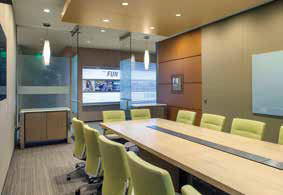- It wouldn't be too far-fetched to say that there have been more devices and appliances added to the enterprise network in the past three years than in the previous three decades. On average, users are connecting more than one device to the network, and that's putting a pinch on the help desk. Terry Vahey, Associate Vice President and CIO for IT Services at San José State University (SJSU), is looking to change the help desk dynamic based on human behavior.
- "Now the calls come into one help desk area and they get triaged. The central help desk area has a number of questions that they ask a caller, and do some troubleshooting. Most of those calls can get resolved right then. If not, the call goes to the next level person," Vahey said. With the number of new technologies added to SJSU, her department is working on “question-flows,” to anticipate what people will be asking to help isolate the problem and provide a solution to our callers.
- But Vahey has also made a practice of walking around the campus and asking students what they want. "They want to find the answer quickly. They're 18 to 22 years old—they communicate with their friends all day long on their cell phones and laptops. They don't want to spend time talking to people to get help. They are used to the Amazon and Google model. You can't call Amazon, or Google." Vahey is ultimately striving for the Google model, "The goal is to have things be so well documented, to solve more problems with self-help methodologies and have the answers be understood easily, and found quickly," Vahey said. "This is in reaction to what people have asked for, and it is what a service organization should be doing."
For more info, visit: http://www.sjsu.edu/president.
Cindy Davis is a contributing editor of AV Technology magazine.

